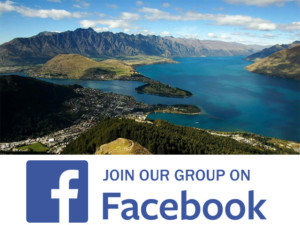PARAGLIDING HISTORY
In late 1986, a resident of Queenstown, Rene Schwaller, returned to his home country of Switzerland for a visit and found people flying with skis and off mountains in the ski resort of Leysin.
It didn’t take Renee long to get taught the basics and he was off!
It seemed logical to purchase two modified nine cell ram air parachutes and bring them back to New Zealand. The sport was called Parapente (‘para’ referring to the chute and ‘la pente’ means ‘the hill’ in french).
Importing the wings was difficult and prices fluctuated so Rene decided to manufacture his own and called them ‘Renegade’ parapentes.
And so it was that in 1987 that the Skyline gondola was first explored for flying! Rene and his friends had also discovered the Crown Range and they started teaching there.
About the same time Robert Eyman and Ged Hay arrived in Queenstown from Europe with different looking wings that were made out of a zero porosity material. They were referred to as “shower curtains”. They were very bulky and heavy but had a way better glide ratio! They were also not as forgiving and would easily go into a spin or go ‘negative’…a whole new experience!
As the sport grew in popularity Rene got approached by a gentleman called Graham Henderson. He was a hang-glider pilot and was curious about these new paragliders. They had a meeting as to how it was possible to have the two sports under one umbrella, and so they altered the hang-gliding manual and its rating system to create and write up the first Parapente ratings.
A few of the parapenters had joined the already established ‘Southern Hang-gliding Club’ and so it was in the early 1990’s that the newly amalgamated flying groups formed the ‘Southern Hang and Paragliding Club”.
Queenstown had its hard-core group of climbers and pilots that were actively involved with climbing big peaks and flying from them. The early days of hike and fly!
Soon, there were many pilots and a few of them had a go at manufacturing larger wings with tandems in mind!
Bruce Parlane had a company called ‘Pacific Paragliders’. He put together the first tandems that were eventually flown commercially off the ‘Skyline’. The first tandem wing was a 31m ‘Monarch’ with a glide -ratio of about 6:1.
All this time, pilots and friends would arrive from Europe with the latest fancy European models! Of course the Queenstown pilots would buy them when they left. Some were even copied!
Shaun Barry organized one of the first NZ National xc competitions from Coronet Peak in January 1994 when cameras were still used to confirm the turnpoints that were then scattered throughout the valley! The sport evolved very quickly and by the late 1990’s glider ratings were introduced, flying became more regulated and the small operators disappeared!
Concurrently with developments in Queenstown, ‘Treble Cone’ near Wanaka was first being flown by hang-gliders in the 1980’s particularly after a “Blue Stratos’ after-shave advertisement used hang-gliders at Treble Cone for their product.
Paragliders first began flying from the ridge above what is now ‘Pub Corner’ in the late 1980’s. Richard van Nieuwkoop and Paul Aubrey were among the first paragliders to start flying Treble Cone and set up the ‘Air Action’ paragliding school, which was to become ‘Wanaka Paragliding’, in 1990. It was still operating in 2017.
Through the early 2000’s Queenstown’s tourist boom led to the development of the commercial airport. Airspace for flying paragliders and hang-gliders became confined and restricted. The days of climbing up anywhere and flying off, even from ‘The Remarkables’, in the Wakatipu Basin was no more.
By 2017 the main flying sites in the region were the three dedicated flying areas in the Wakatipu Basin, primarily the Gondola “Skyline” and Coronet Peak, and Treble Cone, just west of Wanaka. Mark Hardman was in the early days of developing Cardrona. The SHGPGC had over 300 actively flying members and there were four commercial tandem operators and three flying schools in the region.
Also, in 2017, after a hiatus of several years, paraglider pilots were once again able to access the NZ Ski field lift services through the winter ski season and fly from the snowy summit of Coronet Peak.

